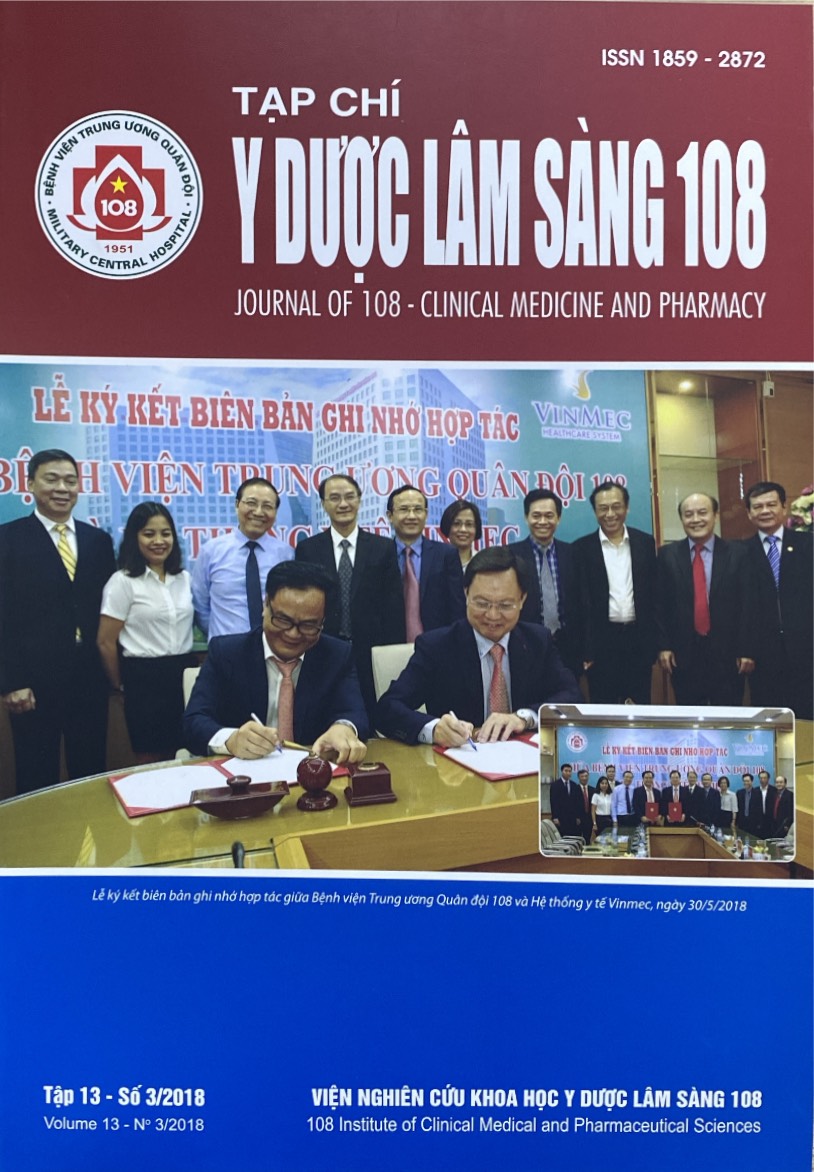Clinical and laboratory manifestations of iatrogenic Cushing Syndrome
Main Article Content
Keywords
Abstract
Objective: Describe the clinical manifestations and investigators including the level of cortisol in serum of iatrogenic Cushing syndrome patients at 8 hour and 20 hour. Subject and method: Prospective, descriptive, cross-sectional study. We examined the clinical signs and symptoms and investigated the laboratories of 110 iatrogenic Cushing's syndrome patients admitted in Rheumatology Department of the 108 Military Central Hospital from January 2015 to January 2017. Result: Common symptoms were: “moon” face (93.6%), red face (80.0%), frail (80.0%), thin skin (76.4%), subcutaneous hemorrhage (39.1%), depression (20.0%), hirsutism in female (66.7%), low libido (70.9%). Laboratories: Leukocytosis (47.3%), hyperglycemia (59.1%), high cholesterol (55.9%), hypertriglycemia (59.8%), low cortisol 8 hour (51.0%), low cortisol 20 hour (46.7%), reversed cortisol (55.4%). Conclusion: Clinical symptoms of iatrogenic Cushing syndrome are varied, the level of serum cortisol at 8 hour and 20 hour can be lower or reversed in the major part of the study group.
Article Details
References
2. Lê Thị Tâm Thảo (2013) Đánh giá đặc điểm lâm sàng và nồng độ corticoid huyết tương ở bệnh nhân có hội chứng Cushing do dùng Glucocorticoids. Luận văn Thạc sĩ y học, Học viện Quân y.
3. Hà Lương Yên (2004) Nhận xét đặc điểm lâm sàng và cận lâm sàng của hội chứng Cushing do dùng Glucocorticoids. Luận văn Thạc sỹ y học, Trường Đại học Y Hà Nội.
4. Đỗ Trung Quân (1995) Góp phần chẩn đoán và điều trị hội chứng Cushing. Luận văn Tiến sĩ Y học, Trường Đại học Y Hà Nội.
5. Fauci AS, Kasper DL, Dan L Longo DL et al (2008) Disorders of the adrenal cortex. Harrison’s Principles of Internal Medicine, 17th edition, Chapter 336.
6. Curtis JR, Westfall AO, Allison J et al (2006) Population-based assessment of adverse events associated with long-term glucocorticoids use. Arthritis Rheumtism 55(3): 420-426.
7. Ross EJ, Linch DC (1982) Cushing’s syndrome-killing disease: Discriminatory value of sign and symptoms aiding early diagnosis. Lancet 2: 646-649.
8. Iwamoto T, Kagawa Y, Naito Y et al (2004) Steroid - induced diabetes mellitus and related risk factors in patients with neurologic disease. The Journal of Human Pharmacology and Drug therapy 24(4): 508-514.
9. Ferrari P (2003) Cortisol and the renal handling of electrolytes: Role in Glucocorticoids - induced hypertension and bone disease. Clinical Endocrinology and Metabolism 17(4): 575-589.
10. Aron DC, Findling JW, Tyrrell JB (1987) Cushing’s disease. Endocrinol Metab
ClinNorth Am 16: 705-730.
 ISSN: 1859 - 2872
ISSN: 1859 - 2872
